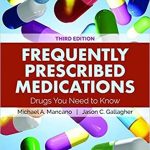
Prescription medications are essential for treating various health conditions. However, it is crucial to store and dispose of these medications properly to ensure the safety of yourself, your family, and the environment. Improper storage or disposal can lead to accidental ingestion, misuse, or contamination of water sources. In this article, we will discuss some guidelines on how to store and dispose of prescription medications correctly.
Storing Prescription Medications
When it comes to storing prescription medications, follow these tips to maintain their effectiveness and prevent any potential harm:
1. Read the Label
Always carefully read the label and any accompanying instructions provided by the pharmacist or healthcare professional. The label will provide valuable information on the storage requirements for the specific medication.
2. Store at the Right Temperature
Keep medications at the appropriate temperature to maintain their potency. Some medications require refrigeration, while others should be stored at room temperature. Follow the instructions given on the label or consult your pharmacist if you are unsure about the proper temperature for storage.
3. Protect from Moisture
Moisture can degrade medications, so it is essential to keep them away from humid environments like bathrooms or the kitchen sink. Store medications in a cool, dry place, and consider using moisture-absorbing packets to minimize any potential damage.
4. Store Away from Children and Pets
To prevent accidental ingestion or misuse, keep prescription medications out of reach of children and pets. Store them in a high, locked cabinet or a designated container that is secure and inaccessible to others.
Disposing of Prescription Medications
When it comes to disposing of prescription medications, it is crucial to do so correctly to prevent accidental ingestion or environmental pollution. Follow these guidelines:
1. Do Not Flush Down the Toilet
Flushing medications down the toilet can contaminate water sources. Avoid this method unless specifically instructed by the medication label or accompanying instructions.
2. Take Advantage of Take-Back Programs
Many communities and pharmacies provide take-back programs for safe medication disposal. These take-back programs ensure that medications are disposed of properly without harming the environment. Check local resources to find the nearest take-back location.
3. Utilize Medication Drop Boxes
Some pharmacies, law enforcement agencies, and community organizations have medication drop boxes where you can safely dispose of prescription medications. These drop boxes are usually secure and are specifically designed for medication disposal.
4. Remove Personal Information
Before disposing of prescription medication containers, ensure that all personal information, including your name and address, is removed or fully obscured to protect your privacy.
5. Follow Disposal Instructions
If there are specific disposal instructions on the medication label or accompanying literature, follow them carefully. Some medications should be mixed with undesirable substances like coffee grounds or kitty litter to discourage misuse.
Conclusion
Properly storing and disposing of prescription medications is not only important for your safety and the safety of others but also for the preservation of the environment. Following the guidelines mentioned above will help ensure the potency of the medications and prevent accidental ingestion or environmental pollution. Always consult your pharmacist or healthcare professional for specific storage and disposal instructions if you have any doubts.








